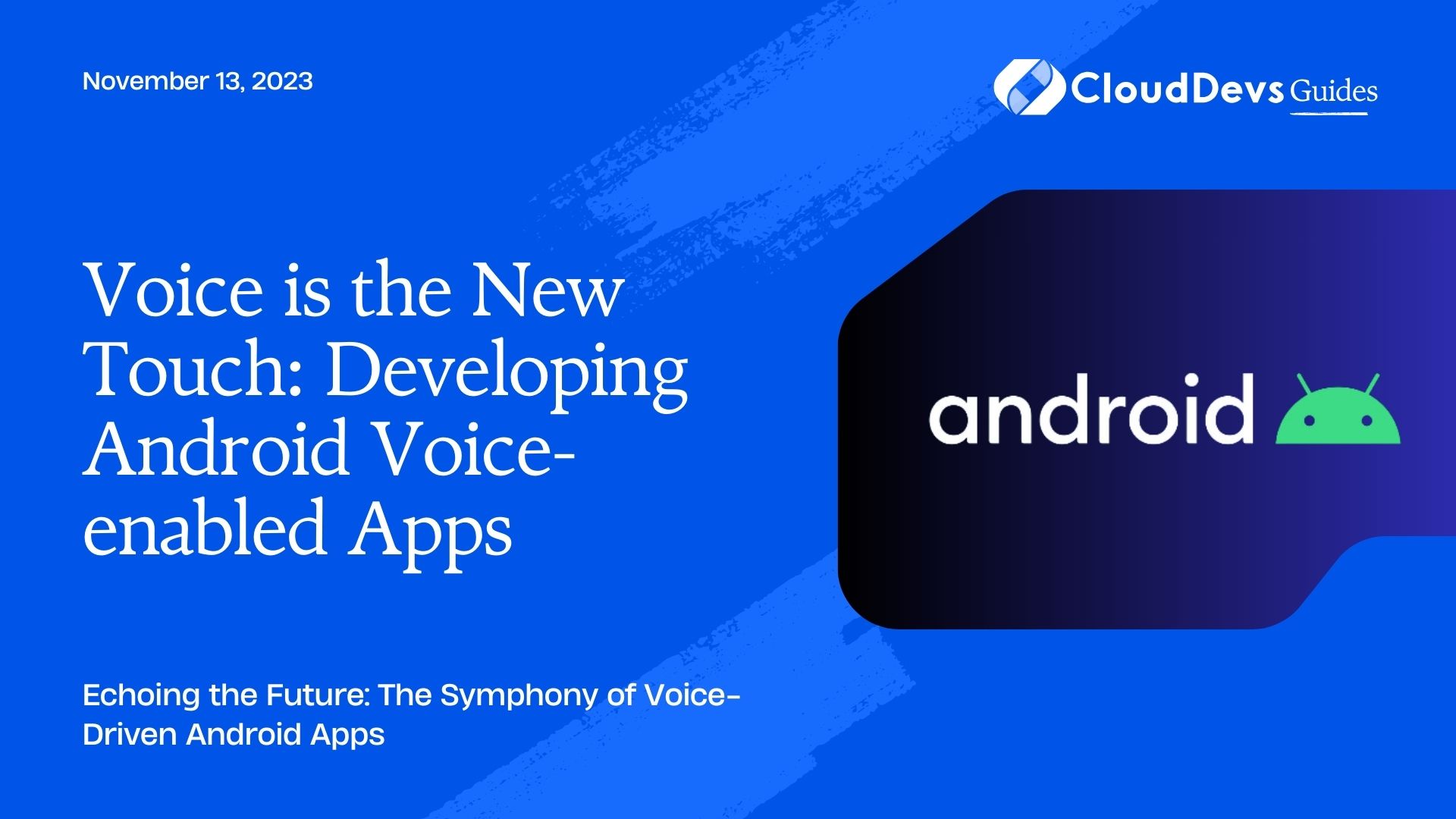Voice is the New Touch: Developing Android Voice-enabled Apps
With the increasing integration of smart home devices, wearables, and various IoT devices in our daily lives, voice-enabled apps are fast becoming the norm. Voice assistants, such as Google Assistant, Alexa, and Siri, provide a hands-free and interactive way to operate our devices.
Table of Contents
For Android developers, harnessing the power of voice to enhance app functionality offers an engaging experience for users. As the demand grows, many companies are looking to hire Android developers skilled in this domain. Here, we’ll delve deep into developing voice-enabled Android apps, and provide examples for a better understanding.
1. Why Voice-enable Your App?
Voice interactions allow users to communicate with your app using natural language rather than traditional touch gestures. Some reasons to voice-enable your app include:
– Accessibility: Making your app accessible for users with visual impairments or physical disabilities.
– Convenience: Hands-free operations are particularly useful for apps used when multitasking.
– Engagement: Voice interactions can make an app more engaging and interactive.
2. Google’s Voice Interaction API
Google offers the Voice Interaction API that developers can leverage to add voice capabilities to their apps. This API lets your app integrate directly with Google Assistant and other voice command services.
Example:
Imagine you’re developing a recipe app. With the Voice Interaction API, users could say, “Hey Google, ask [Your App Name] to show me a pasta recipe”. Your app would then respond by displaying a relevant recipe.
3. Steps to Integrate Voice Interaction
3.1 Add Voice Interaction Dependencies
First, update your app’s build.gradle file to include the necessary dependencies.
```kotlin
dependencies {
implementation 'com.google.android.gms:play-services-voice:19.0.0'
}
```
3.2 Create a VoiceInteractionService
This service handles voice interactions from the user.
```kotlin
public class MyVoiceInteractionService extends VoiceInteractionService {
}
```
3.3 Define Voice Commands in an XML File
Create an XML file that outlines all the voice commands your app will support. For our recipe app:
```xml
<voice-commands>
<command>
<keyword>show</keyword>
<parameter type="string" id="recipe_type"/>
</command>
</voice-commands>
```
3.4 Handle User Voice Commands
In your VoiceInteractionService class, override the onCommand() method to handle the voice commands.
```kotlin
@Override
public void onCommand(VoiceCommand voiceCommand) {
String command = voiceCommand.getCommand();
if (command.equals("show")) {
String recipeType = voiceCommand.getParameter("recipe_type");
displayRecipe(recipeType);
}
}
```
4. Voice Feedback in Apps
Engaging with users is not just about receiving voice commands but also providing voice feedback.
Example
In our recipe app, after a user asks for a pasta recipe, the app could say, “Showing recipes for pasta. Would you like spaghetti or penne?”
You can implement this using Android’s Text-to-Speech (TTS) engine.
5. Testing and Optimization
It’s crucial to test voice interactions extensively. Different accents, pronunciations, and environmental noises can affect voice recognition. Additionally, consider the following for optimization:
– Feedback: Always provide auditory or visual feedback so users know the app is processing their command.
– Fallbacks: Have a fallback option if the voice command is not recognized.
– Clarity: Make sure the app provides clear instructions on how users can utilize voice commands.
6. Ethics and Privacy
Voice interactions can be sensitive. Always inform users when their voice is being recorded or analyzed. Ensure that you handle and store voice data ethically and in line with privacy regulations.
Conclusion
Voice-enabled apps represent the next big step in making technology more accessible and interactive. As Android developers, it’s an exciting time to innovate and offer users a more intuitive way to interact with our apps. With the rising demand, businesses are increasingly looking to hire Android developers proficient in this new wave of interaction. With tools like Google’s Voice Interaction API, the path to voice integration is becoming smoother. Remember to keep the user experience at the forefront, ensuring that voice interactions are not just a gimmick but genuinely add value to your app.
Table of Contents






